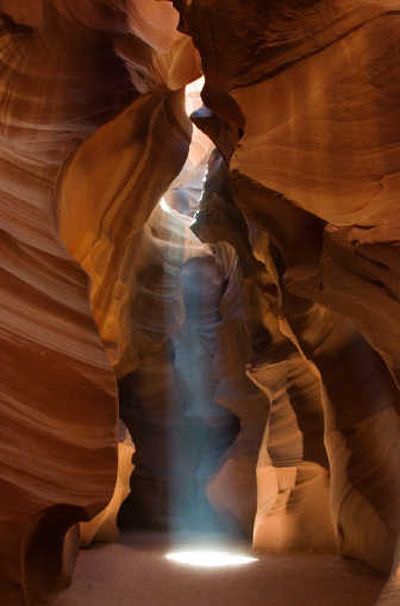Picture perfect

‘I love it,” says Photoshop guru Ben Willmore about his decision to live full-time in a Prevost bus.
“I didn’t realize how well it would align with my business,” he says.
Willmore, a best-selling author and highly successful Photoshop educator, has been living in his motor coach for about 16 months.
He was reached in Dallas, Texas, before flying off on a two-week training trip to Victoria, B.C., and on to London.
For those unfamiliar with Photoshop, it is a computer program first released in 1990 for editing images. Today it is used for a wide range of professional and amateur purposes.
Willmore, 40, began working with the software more than 13 years ago as a graphic designer and has since evolved into one of the top Photoshop trainers in the world.
The self-proclaimed “traveling Photoshop hack” sold his stick-built house in the mountains near Boulder, Colo., in early 2006 and hit the road.
The rig
His rolling home is a 1997 40-foot Liberty Prevost. With a width of 8 ½ feet, the interior space comes to approximately 340 square feet.
That’s enough space for “quite a few” parties, Willmore says.
“Having a dozen friends on the bus makes for a comfortable gathering,” he says, “but when over 30 people show up it gets to be a little crowded.”
Willmore modified the interior of his coach by replacing one of the two living room sofas with a lounge chair and ottoman. He turned the dining area into his office by adding an Aeron ergonomic chair and a table that holds about a dozen hard drives and a color laser printer.
The rear bedroom features a queen island bed, and the walk-through bathroom has a standard-size shower. There is extensive storage in the basement compartments, accessed from outside the bus.
During his first year on the road, he traveled almost 16,000 miles through 22 states, from Florida to Washington and back. The diesel-pusher engine averaged between 6 and 8 miles per gallon.
Mobile lifestyle
What drives Willmore to stay with the mobile lifestyle is the opportunity to explore new places.
“Before I lived in an RV, I would have to wait until vacation in order to go out and do things,” he says. “Now it is commonplace, it is just a normal day.”
It took Willmore quite a while to adjust to the fact that just because he was traveling, did not mean he was “on vacation.”
“For the first several months I felt that it all should end next week,” he says.
With the exception of winter, it is rare for Willmore to spend more than one week in any particular location.
“I often don’t know where I’m going to be three days in advance,” he says.
Favorite places
His primary motivator for selecting the next spot on the map is the possibility for great photographs.
“I’ve always had an interest in photography,” says Willmore. “For a while in college I thought I wanted to be a professional photographer. It wasn’t until after I got into the RV that I became much more serious about photography.”
One of Willmore’s favorite places to shoot images is the Utah-Arizona border region near Page, Ariz., especially the breathtaking Antelope Canyon on Navajo Tribal Park lands.
“I can stay at a national park for weeks on end,” writes Willmore in his travel blog, whereisben.com.
“During that time, I usually wake up before sunrise and go out shooting, come back to the bus and work a full day (nicely broken up by a midday hike) and then shoot again during the golden hour before sunset.”
All the while he is visiting those national treasures, he says, “I can sleep in my own familiar bed and have all my belongings with me.”
The avid photographer is also drawn to abandoned buildings, neon signs and Route 66.
One image posted on his blog features an old, cluttered RV and Auto Repair shop in Cuervo, N.M.
The almost-surreal picture was achieved using a technique commonly referred to as HDR, or “high dynamic range” imaging.
“A lot of people describe it as more of looking like an illustration than a photograph,” says Willmore.
“I actually take three photographs – one that is underexposed, so it is dark; one that is normal exposure; and one that is overexposed, meaning that it is bright.”
By taking the three different exposures and combining them into one image, the photographer captures “the full brightness range of that scene,” Willmore says.
Boondocking
While traveling along secondary roads to out-of-the-way places, Willmore is always on the lookout for unusual and free camping locations.
He does admit to an occasional “blacktop” stay at big-box chain store or vacant lot.
“Before moving into the bus, I had visited a Wal-Mart maybe twice,” he says. “Now it’s one of my most common places to go grocery shopping. That’s because most Wal-Marts will allow you to park overnight in their lot for free.”
With an 80-gallon fresh water tank and a generator, Willmore can easily “boondock,” or dry camp, without the need for conventional utility hookups.
Some of the free spots he’s managed to find include camping on beach at the edge of Lake Powell in Arizona, being within a few blocks of the Golden Gate Bridge in San Francisco and enjoying the warm sun of the Florida Keys.
“I’d rather be parked in an interesting location instead of looking out the window at dozens of other RVs at a campground,” he says.
“There is so much to see in this country,” he reflects, “that I could easily see me living this way for the next 10 years.”